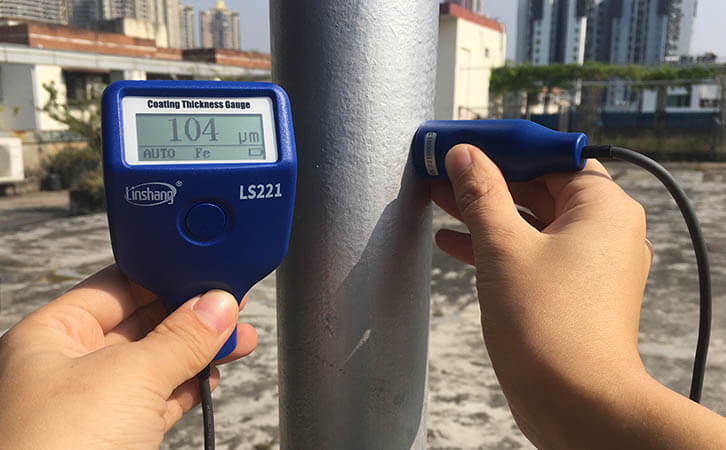Metal Anticorrosive Coating Thickness Detection
Sheet metal is widely used in all areas of our daily life because of its good characteristics.If the surface is eroded by the atmosphere, moisture, sunlight, salt mist mold and other corrosive media, it will cause loss of light and discoloration. If obvious yellow-brown rust appears, the rust of the surface plate is severe enough to be unusable. If the number of rust spots is large, the general recommendation is to replace the entire batch of plates to avoid further deterioration and cause greater quality problems.
1. The purpose of sheet metal surface treatment
In order to meet the product's requirements for corrosion resistance, wear resistance, decoration or other special functions. Although various methods have been used to surface-treat metal plates, the occurrence of corrosion cannot be completely prevented. In order to better prevent the occurrence of rust, this requires enterprises to carry out effective protection measures and strengthen internal management, improve the technical content of production processes and the ability to maintain process parameters. For various methods of rusting the metal, this is a test of the various management capabilities of an enterprise, strictly controlling all influencing factors and preventing problems before they occur.
2. Detection of anticorrosive coating on metal surface
An anticorrosive coating is a covering layer. Generally, this covering layer is applied on the metal surface to isolate the anticorrosive material from the surrounding medium. The anticorrosive layer generally has good electrical insulation, water resistance and strong adhesion on the surface of the pipeline. In order to check whether the anti-corrosion coating is qualified, we generally use an anti-corrosion paint thickness gauge to test.
It is recommended to use Linshang LS221 paint thickness gauge. This paint thickness gauge uses magnetic thickness measurement and eddy current thickness measurement to measure the thickness of non-magnetic coatings on the surface of magnetic substrates. It can also be used to measure the thickness of non-conductive coatings on non-magnetic metal surfaces. The instrument adopts a separate design of the host and the probe, which is very suitable for the narrow space of the steel frame. It is convenient to view the data while measuring in complex environments. This instrument has the characteristics of fast response speed, high measurement accuracy, stable zero position without drift and durability. The coating thickness measurement is simple and convenient whether indoors or outdoors.
- High precision coating thickness gauge for used car
- Automotive paint protection films coating thickness gauge
- Plating Thickness Measuring Instrument for Detecting Anti-corrosion Coating
- Linshang LS220, LS191, LS160A– Necessary for Car Cover Inspection
- Coating Thickness Gauge for Second Hand Vehicle
- Zero Adjustment Step of Coating Thickness Gauge
